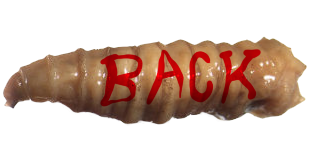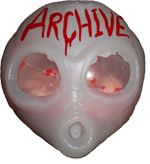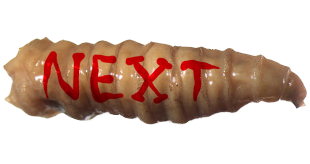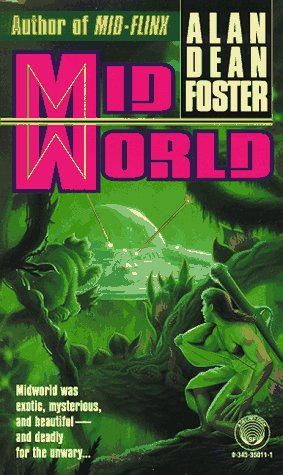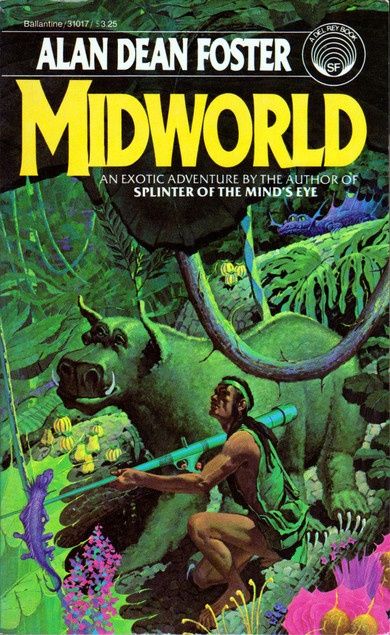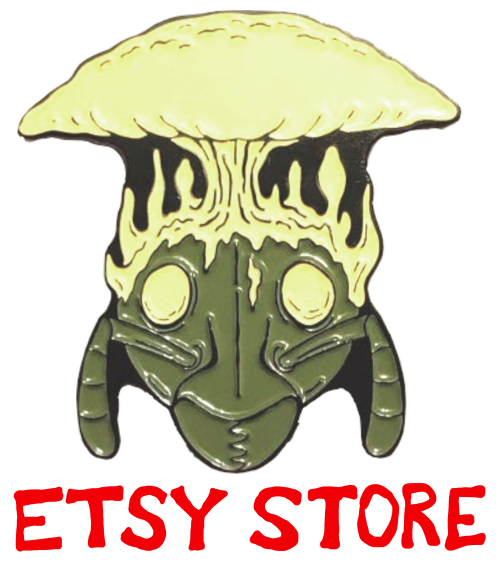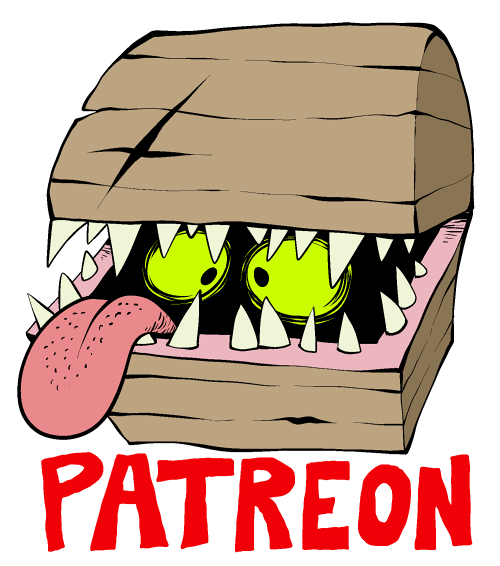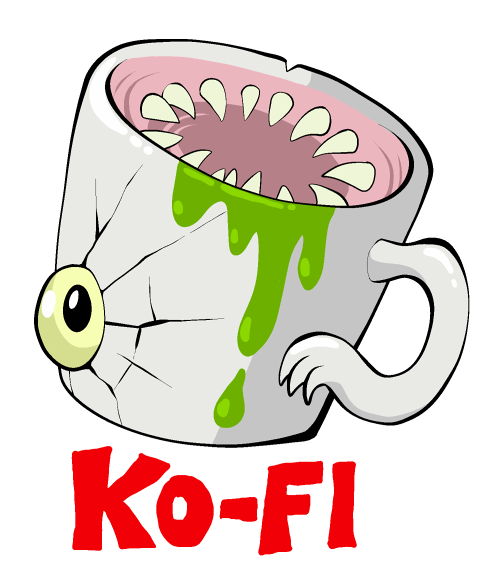
The Worst Ways To Die on Midworld
2021 wound up being the first Halloween season I had to cut short; too many things piled up to work on in the "real world," we had a break-in we had to clean up after, and Halloween itself kind of just didn't materialize to the degree it normally does.
But I wanted to have something special to share, even last-minute, so I went ahead and finished the artwork for an article I've always wanted to do. It's not especially "seasonal," per se, but I think you'll agree it has some of the scariest "monsters" you'll have heard about all year...
I was used to sci-fi books with covers more exciting than any of their content, but I wondered if maybe this book would have some interesting concepts for alien life, so I cracked it open to a random page...and immediately found a description of a tentacled, balloon-like predator called a buna. I skipped to another random page, and there was something described as a "many legged pineapple." I tried the first few pages, and the vine-things on the cover were there, described as "chains of mouths and stomachs" that disguise themselves as woody vines. From there, I discovered more than six or seven fictional species in only a few more seconds of skimming around, and I was absolutely hooked.
I read Mid-World multiple times in a row, cover to cover, for weeks. It was one of the most inspiring examples of world design I'd yet encountered, and it also helped that the story itself proved to be an exciting one. Imagine my excitement, then, when I found out that the same author, the highly esteemed Alan Dean Foster, devoted another entire novel - Mid-Flinx - to the same setting, and at the time of this writing, my spouse and I have JUST read the more recent short story, Mid-Death, for the first time in my life.
ABOUT THE WORLD:
Midworld is explained at one point as a planet that supports "too much life, too well." Almost the entire surface is blanketed by a rainforest of trees that grow thousands of yards in height, bigger around than any man-made skyscraper, and so thick with epiphytic vegetation that some larger fauna can practically "swim" through the canopy. The number of species present on this single planet may exceed most other known worlds put together, and in such a scaled-up, overflowingly diverse ecosystem, a human visitor may as well be a tiny, fragile, and very very tasty bug.
Enjoy my quick interpretations of favorite flora and fauna from one of my all-time favorite settings and biggest inspirations, as we go over a dozen of the worst ways for Midworld to murder you:
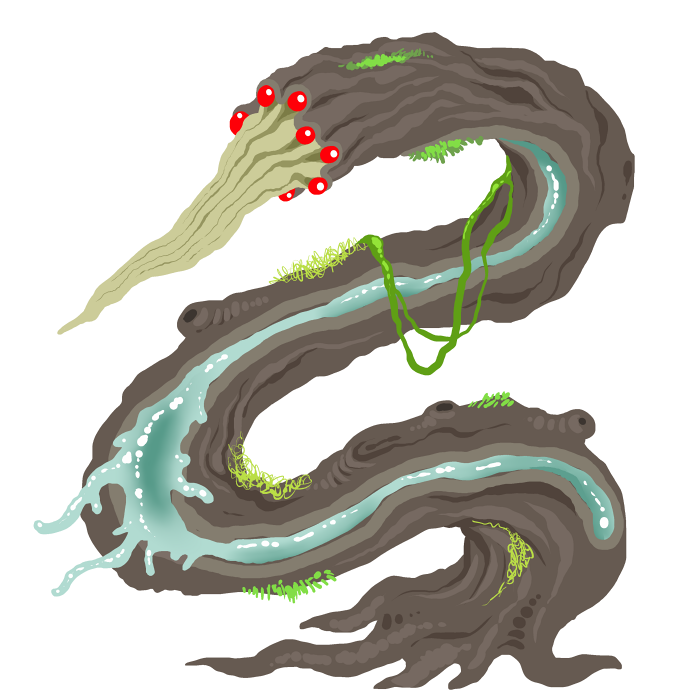
MIRED AND DIGESTED BY A BRIDGE
Most of Midworld's inhabitants stick to the middle levels of the canopy, and those that can't fly or float rely on the various branches and vines to navigate between tree trunks. While various predators have learned to imitate or exploit these highways, a massive carnivore known as a mistyr pulls a double deception: it not only looks like a convenient bridge, but one that has collected fresh, crisp rainwater along its decayed and sunken upper surface.
As soon as something breaches this "water," the liquid begins to congeal and solidify into a gel as adhesive as a tar pit; and it moves, too. The sticky stream is like a single massive amoeba, able to engulf and suffocate prey as the worm-like monster feeds through its sharply pointed trunk.
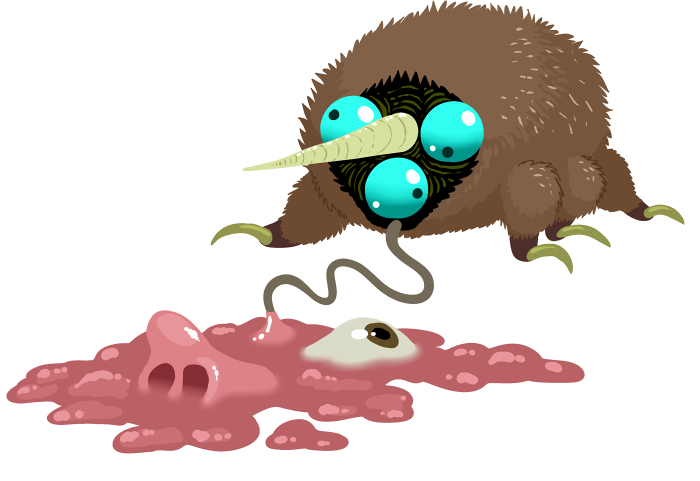
INTOXICATED AND SLURRIFIED
In Mid-Flinx, a band of human antagonists think they've found a shelter for the night - which, on this planet, comes with a nightly, global downpour - but the hollow tree is also home to a colony of small, burbling, furry creatures. Like most of Midworld's "animals," these creatures are three-eyed hexapods. Their bulging eyeballs peer in different directions, like a chameleon, and a single comical horn protrudes from between them. They're small, cute, awkward and seemingly quite timid...until one of them swells like a balloon and fires its horn into one of the group.
While the rest clear out, the poor sucker tries to eradicate the colony with his energy rifle, and as he takes more and more hits from their horns, he feels an amazing rush comparable to the finest narcotics the galaxy has to offer. He's thrilled to get a free drug trip from his ruthless target practice, laughing like a maniac in total ecstacy until the very moment he stops having a throat to laugh with.
His friends find nothing more than a pile of slimy clothes, mushy flesh and collapsed facial features, as each surviving furball unfurls its delicate, butterfly-like proboscis.
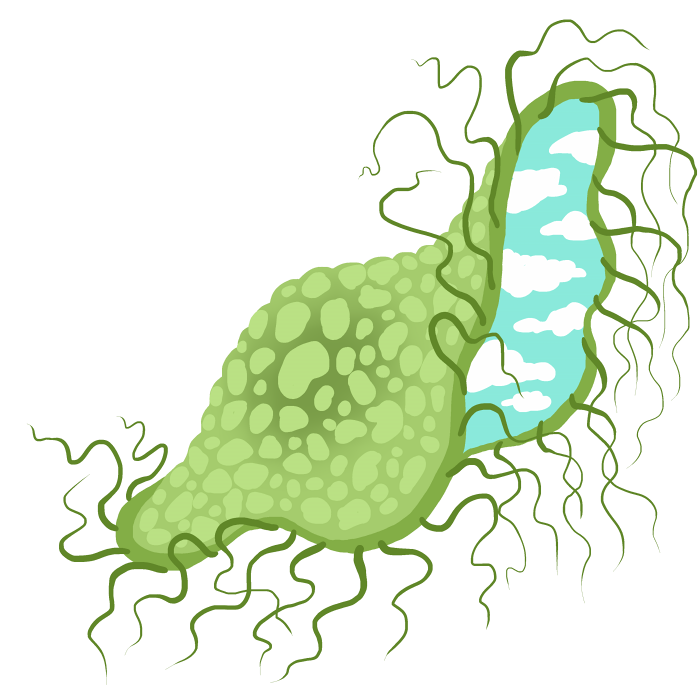
DEATH BY CLOUD WATCHING
The foliage in Midworld is dense enough that many creatures live their entire lives never actually seeing the sky; only the emerald glow of sunlight filtering down through thousands of layers of leaves. A clear hole, all the way through so much foliage, is a rarity that gives many chlorophyllic creatures a chance to soak up some tasty rays...but sometimes, the "sky" is a lot closer than it seems.
This predator was named the clouder by the planet's sapient inhabitants. It's a soft, pancake-like animal, lined with dextrous cilia. In an extreme version of the "countershading" we see in sea life, its upper surface is camouflaged against the forest, but its underside mimics a photorealistic blue sky, complete with white clouds that slowly move across its surface. It even carefully clears a few feet of greenery beneath it to complete the effect.
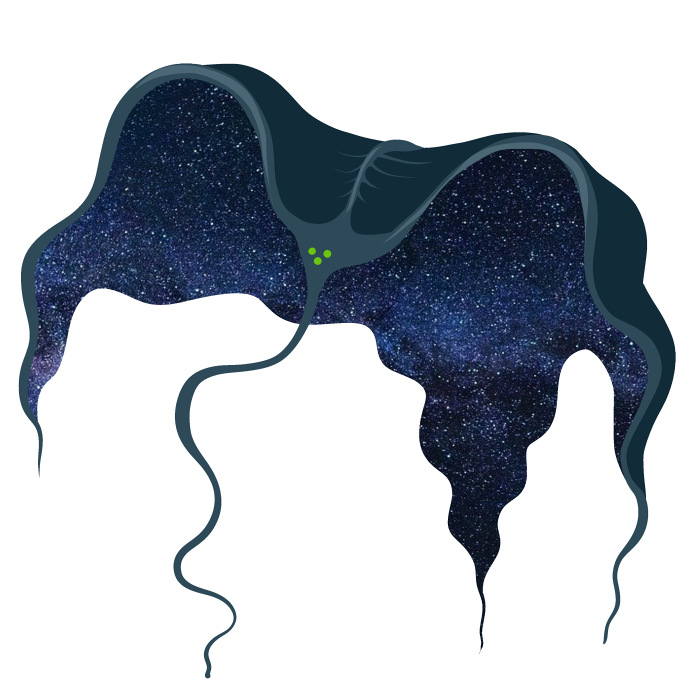
DEATH BY STAR GAZING
The only thing deadlier on Midworld than a false sky is, in fact, the real sky, but there's one point in which the two sadistically intersect. The sky above the canopy is so thick with floating and flying predators, natives actually refer to it as "The Upper Hell," so even when there isn't any hungry clouder, you still don't typically want to expose yourself in a clearing.
One poor sap in Mid-Death thinks he's in the clear, having been left alone by roving flesh-eaters on his assigned night watch, but that may only be because something else already staked out the territory. He never does find out what hit him, until his friends find his softened, bubbling corpse melting away under an ominous, black blanket nobody remembers packing.
This predator employs the starry, night sky version of the clouder's camouflage, but instead of lying in wait for a dumb enough visitor, it slowly and subtly drifts towards its next meal, stopping to hover frozen in place when they're looking, sneaking ever closer when they're turned away.
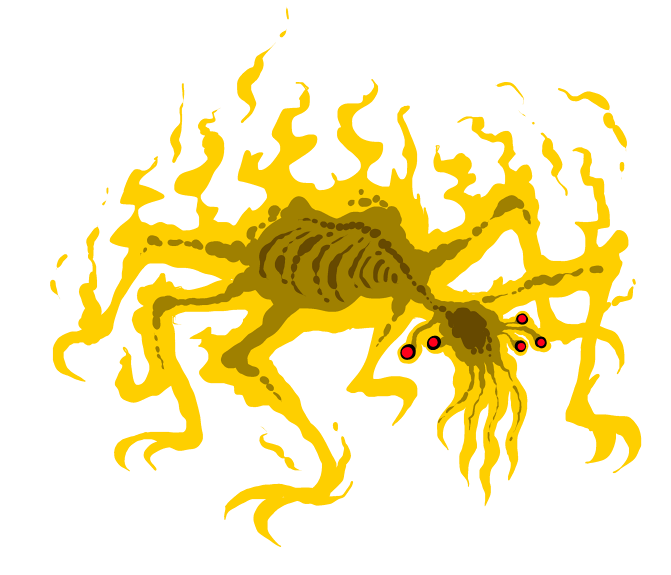
IMMOLATED BY A NEST OF WEAVERS
We never get an official name for these creatures, and they never claim a human victim, but the six-limbed, tentacle-faced colonial creatures are observed defending their magnificently beautiful, silken hive from a large and formidable local predator with a startling biochemical defense.
Like certain real species of ant and termite that "explode" to protect their colony, these animals can latch on to their attacker with their hooked claws and simply light themselves on fire. The forest is wet enough to resist much further damage. A predator's fur and flesh, at point blank range, is not.
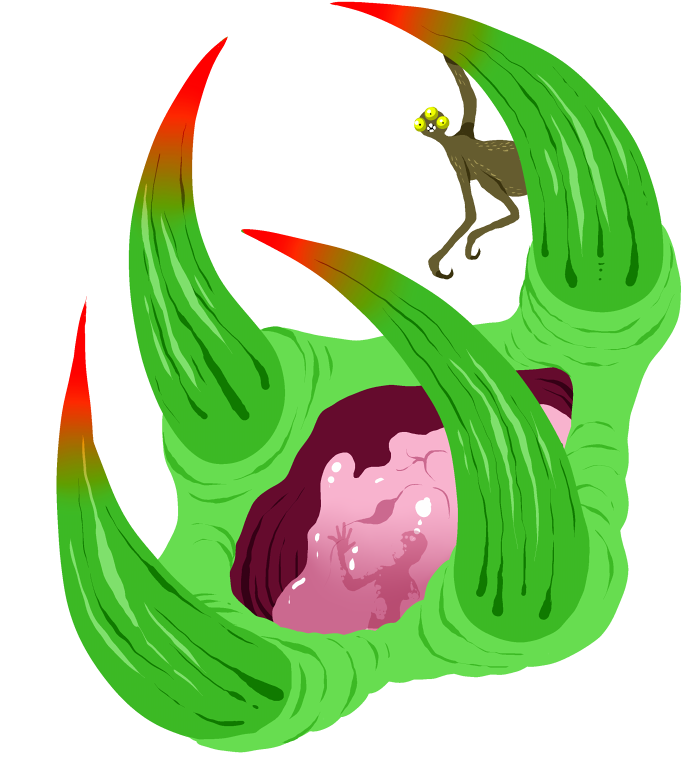
LURED AND DIGESTED BY FALSE THORNS
One of the same buffoons who angered the narcotic furballs meets an equally grotesque end a bit earlier in the book when his boss remarks that some comical, monkey-like critters, with hilariously tiny heads, would make priceless specimens to a personal zoo. Eager to impress, the loyal goon chases one of the lemur-bugs into a hollow on a gigantic, thorny green tree, only for four of the surrounding "thorns" to close in around him.
Blasting their way through, his accomplices find his body engulfed completely by the pink, gelatinous stomach of the camouflaged carnivore, and one of the adorable "monkeys" is even in there with him...its funny, tiny head buried hungrily in his guts. By acting vulnerable and frightened, the creatures entice would-be predators straight into the digestive system of their much bigger symbiote, and both share the spoils.
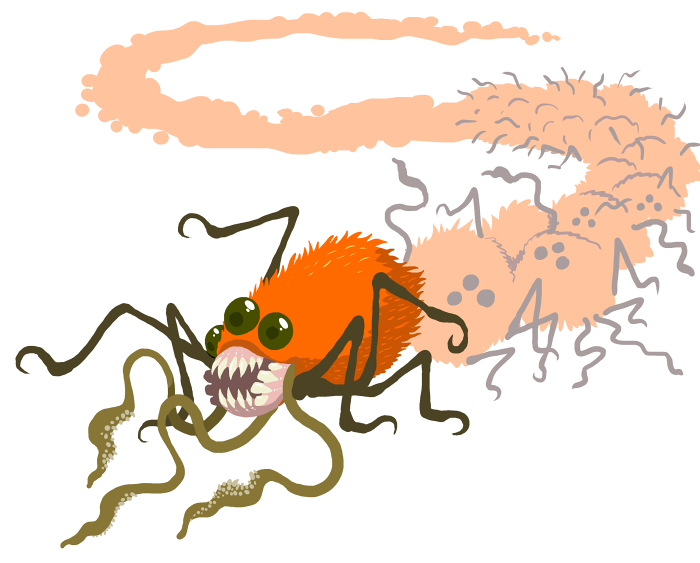
CAUGHT IN THE PATH OF THE AKADI
An encounter with the akadi is one of the biggest events in Midworld, when an indigenous tribe discovers that their precious, symbiotic home tree is directly in the path of an akadi "column," and won't back down from defending their tree even in the face of almost inevitable death.
An akadi is a fat, furry, sloth-sized, bright orange terror with long, thin, hook-tipped legs, three squidlike tentacles ending in barbed pads and four opposing sets of teeth that can crush and grind absolutely any material in the forest up to the densest, toughest wood. One is bad enough, but they travel in densely packed groups numbering in the tens of thousands, flowing like a hungry river long enough that the akadi in front can gorge themselves to bursting, fall back and finish digesting their meal by the time the rest of the swarm passes over them in a non-stop, uninterrupted feeding frenzy that never even has to change direction.
The only thing in the forest that can actually stop a column of akadi is intersecting with another, equally hungry column. There is, however, also one and only one known thing that they will ever bother to go around.
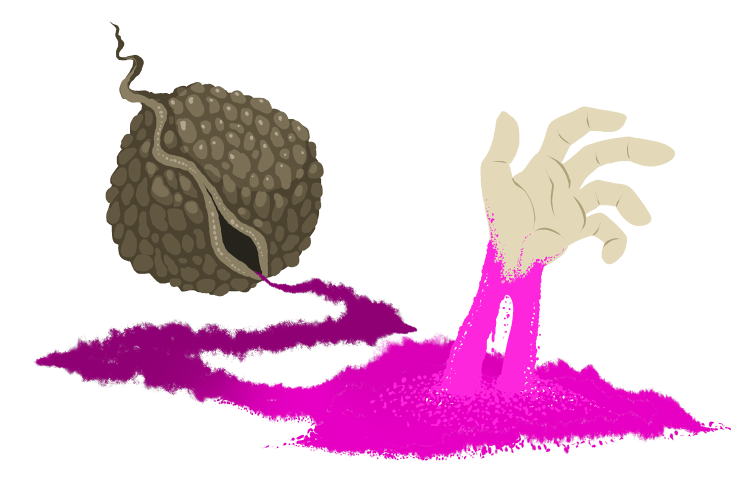
TOUCHING ADDERUT SEEDS
This is not the one thing akadi avoid, but it IS one of the weapons the natives deploy against as much of the roving swarm as they can. An adderut seedpod is twice the size of a coconut, and doesn't look like much, but the slightest pressure will burst it open to scatter what resembles a cloud of iridescent, purple powder.
Every single grain of this powder is a "seed" of the plant, and while we never learn the specifics of their anatomy, each seed is capable of not only crawling around, but feeding on the flesh of any organism they come into contact with, bloating from the size of a dust mote to the size of roughly a big toe in only seconds as it tunnels through whatever meat it can find.
No human lives are lost to adderut in any Midworld literature thus far, but we know it must have happened, given how carefully the natives set them out in the path of the akadi. One is quick to remark that he wouldn't let his worst enemy touch even one adderut seed. Given how much ground they cover and how tiny they are, one of those pods must contain at least a billion of them.
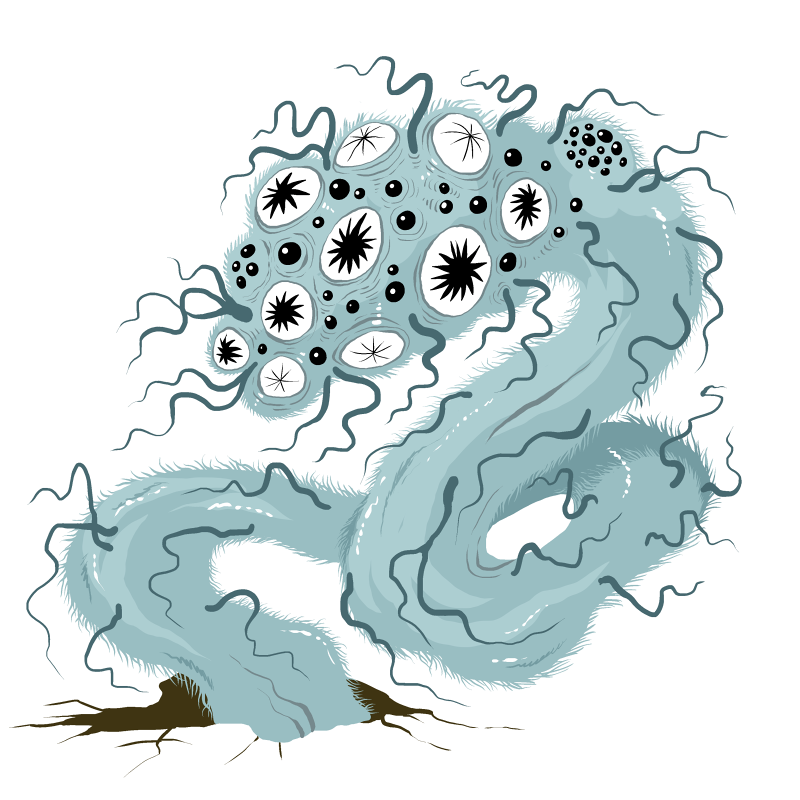
THE SILVERSLITH
The nest of the silverslith is that one and only thing akadi will stop and change their course to avoid. Said nest is typically a hollow in a tree trunk that could fit half a football stadium, and simply setting foot in its territory can permanently imprint it with your scent.
We never learn a thing about the biology of this creature, but one character catches a single glimpse of its head end: hundreds of feet in length, bigger around than a whale, the nightmarish lifeform is completely covered in a coat of metallic, squirming cilia broken up by many longer, clutching tentacles, and its "head" is really just a tumorous clump of globular, black eyeballs and gibbering, toothy mouths.
According to natives, a silverslith has never been seen sleeping, dying, aging, bleeding, or reacting to any kind of pain or illness.
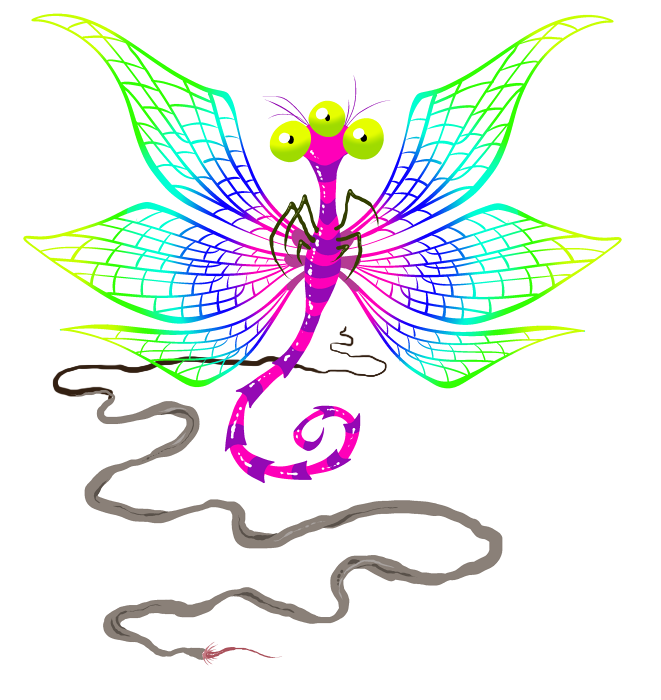 DISTRACTED BY A "FOUL BEAUTY"
DISTRACTED BY A "FOUL BEAUTY"
Even after multiple deadly encounters with beautifully disguised wildlife, two of Mid-Death's protagonists feel at ease with a small, delicate looking, fantastically colorful creature they encounter after dark. It doesn't even approach them, after all; it simply hovers, gently, a few yards away as it slowly undulates its multicolored, bioluminscent wings.
It's so lovely, so charming, so relaxing to watch, until of course one of the pair abruptly collapses. Your first thought might be that the creature itself pulled some sort of hypnotic trick, or maybe it was wafting some invisible, toxic compound? The truth is diabolically simpler, as the rest of the team discovers that an incredibly long, brown "vine," a well-camouflaged wormlike animal, has quietly crept up to the victim, painlessly inserted its proboscis through his boot, and has spent the entire time casually draining him of blood while its symbiotic partner attracted more attention.
That's still not the worst part, however; hours later, just when he seems to have made a recovery, the unlucky sap begins to feel very, very ill, and soon, he begins to cough up a bloody red froth. More and more pours from his every orifice as he collapses for a second time, and the team notices that the froth seems to be rippling.
The vine-worm doesn't just drain blood: it replaces it with millions of its own microscopic larvae.
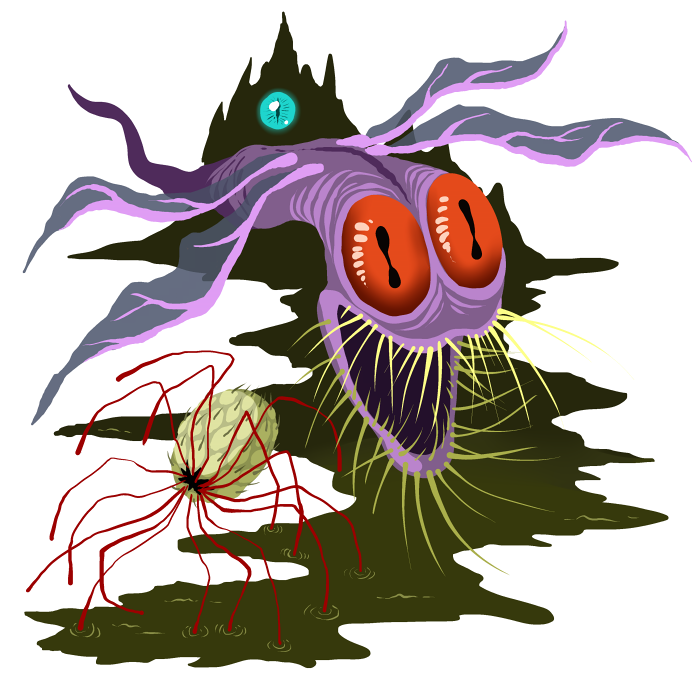 FALLING TO THE "LOWER HELL"
FALLING TO THE "LOWER HELL"
The "upper hell" above the canopy is bad enough, but natives truly fear the lower hell: a forest floor in darkness as absolute as the deep-sea abyss. Between a planetwide web of roots the size of freight trains is a black, mushy ocean of rotting vegetation so rich with bacteria and fungi that a freshly crafted raft can soften and decompose in mere hours, provided you aren't done in anyway by the non-stop onslaught of predators adapted to the universe's largest, darkest swamp.
Only three predators are actually described by the one brief foray taken into the lower hell: a big-eyed, needly-toothed flier that "wheezes like an old man," the "many-legged pineapple" I mentioned before, and one more that I won't spoil, suffice to say that even as our main characters flee into the dreaded forest floor, the silverslith seems to slow down cautiously.
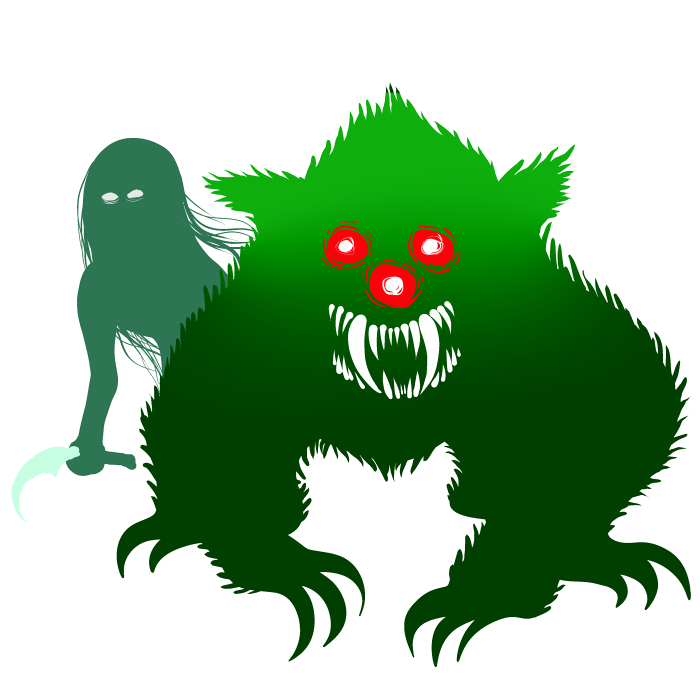 DISRESPECTING THE NATIVES
DISRESPECTING THE NATIVES
Remarkably enough, Midworld is home to actual, human life: the descendants of a ship that crashed only centuries ago, but already the survivors have evolved into a slightly smaller, lighter, more arboreal race far more quickly than ought to be possible. Despite the nightmares around every corner, they are kind, compassionate and peaceful people, which only makes sense: there isn't a whole lot of time for war or prejudice when everyone's busy learning which flowers have a taste for eyeballs. Forced to memorize and respect a thousand kinds of worms, mushrooms and aerial jellyfish just to survive past four years old, they're also more in tune with nature and more educated on biology than the average Earthbound naturalist could even begin to sort out, their knowledge of local fungal compounds alone more complex than any technological expertise in the galaxy.
Their survival is certainly helped by their symbiosis with another, much more formidable sapient species, the bear-like furcots...but "symbiosis" is putting it lightly. Every time a Midworld human is born, a baby furcot just...shows up. When that human dies, so does their furcot partner across any conceivable distance, and vice versa.
How is this possible? What happened in only centuries to bind two alien species so intimately? The answer is only implicit by an even more surprising and fascinating reveal in the finale of the original Midworld that I prefer not to spoil, but even compared to everything we've just reviewed, it makes clearer than ever that you do not fuck with Midworld.
MORE HALLOWEEN FEATURES:
